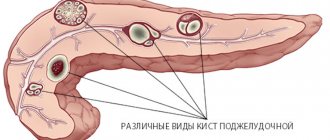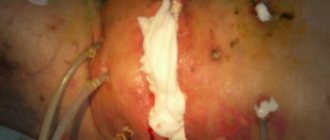An experienced dermatologist conducts consultations at the Rossimed clinic. We use modern diagnostic methods and effective methods of treating skin diseases.
Everyone is familiar with states of emotional arousal in which a flush of blood forms in the face. From a medical point of view, this phenomenon is not considered a pathology. However, when the redness of the skin becomes persistent, the question arises of diagnosing one of the many types of diseases called erythema.
Make an appointment online Make an appointment
The pathological condition of discoloration and the development of inductive edema can be caused by various reasons, for example, exposure to high temperatures, hot weather or taking a hot bath, mechanical irritation during rubbing or massage. Chemical, radiation or thermal burns, as well as viral or bactericidal infections cause redness of the skin. In addition, color change is possible due to an allergic reaction.
What it is
The name erythema has a Greek root and is translated as “red.” Pathological pigmentation of the skin in a crimson color is due to the filling of capillaries with blood located on the surface of the dermis and the lack of outflow. This process is caused by various reasons, depending on which erythema is classified, its symptoms are varied.
Children are more often affected by the disease. The cause of redness and rashes are diaper rash and infections. In a newborn child, the pathology is caused by adaptation to the conditions of post-uterine life.
What are allergic eye diseases?
The symptoms of allergic reactions from the eyes are very diverse. This may be more or less mild redness, itching, blistering rashes, burning on the skin of the eyelids (allergic dermatitis), inflammation of the transparent mucous membrane (allergic conjunctivitis) with lacrimation, itching, etc. However, in some cases, the reaction is much more severe and leads to the rapid development of keratitis (toxic or infectious-allergic inflammation of the cornea), uveitis (allergic inflammation of the circulatory system of the eyeball), even to damage to the retina and optic nerve head.
The most common form of ocular allergic reaction, conjunctivitis, can take both an acute and chronic course. Symptoms are approximately the same in both cases: constant lacrimation, itching or pain in the eye, mucous exudate, characteristic glassy swelling of the conjunctiva (chemosis).
Hay fever, or seasonal hay fever, is a typical and widespread example of an allergic reaction, including an eye reaction, to pollen. In the classic version, the peak of hay fever occurs in August and is caused by one of the most powerful allergens, ragweed pollen - (ragweed belongs to the so-called “quarantine” weeds and must be purposefully destroyed by a special service, which, apparently, is not done everywhere and without special success). Hay fever can also be caused by poplar or dandelion fluff, grass, flowers and any other plants. Allergic conjunctivitis is almost never isolated and is usually accompanied by rhinitis (runny nose), uncontrollable repeated sneezing, rash and itching on the skin; Attacks of allergic bronchial asthma may also develop.
It is somewhat different from the so-called hay fever. spring catarrh is an allergic (kerato-) conjunctivitis, which is also a seasonal disease and develops with the arrival of the warm season. The reason has not been reliably established, but the hypothesis that spring catarrh is based on individually heightened sensitivity (hypersensitivity) to the ultraviolet part of the solar spectrum, which is generally dangerous for the eyes in many aspects, is quite well-reasoned. The role of allergenic pollen cannot be ruled out either. The features of such seasonal allergic inflammation are the incidence only in childhood (mainly in boys), the chronic type of course, the presence in the clinical picture of symptoms of photophobia, increased secretion of tear and mucous fluid; A specific manifestation is also the proliferation of papillary rashes on the inner conjunctiva of the eyelids (“cobblestone pavement”), less often along the limbus - the perimeter of the cornea.
Allergy to contact lenses is considered a special form of allergic reaction, which in most cases deprives patients with refractive errors of the opportunity to use this convenient method of optical correction. The direct allergen can be the lens material itself or the solution in which it is stored, but volatile allergens from the air can also settle on the surface of the lens (for example, when using aerosol hairsprays, insecticides, deodorants, etc.).
Causes
The phenomenon in question may be natural, for example, caused by increased physical activity, intense feelings of fear, shame, excitement, or UV radiation. In these situations, redness goes away on its own as soon as possible when the causes are eliminated.
However, treatment requires the manifestation of persistent erythema, which develops as a result of allergies, infections, chemical or thermal burns.
Sometimes redness of the skin occurs due to an insect bite. This type of erythema is called ring-shaped. Because the affected areas are oval in shape with red outlines and a light shade in the middle. Raised and hot affected areas are typical symptoms.
However, insect venom is able to migrate with the bloodstream to all parts of the body, where red spots form.
Taking certain types of medications can also cause erthematous gastroduodenopathy. It manifests itself as pigmentation and swelling of the skin.
In a number of pathologies of internal organs, erythema also occurs, for example, the palmar form occurs when liver function is impaired. With a stomach ulcer, gastrointestinal bleeding, poor diet with excessive intake of spicy foods and alcohol, and in the presence of infection in the intestines, antral gastropathy develops.
The treatment method is selected individually for each form of the disease.
Why do eyes suffer from allergies?
The eyes are among the “favorite targets” and areas for the development of allergic reactions. The tissues and structures of the eyeball are thin, very sensitive, not very well protected from the harmful influences of the external environment - and therefore especially vulnerable. The cornea, eyelids, eyelashes, sclera, conjunctiva are in direct contact with the air, where particles of countless substances are contained in suspension, as well as with rain and tap water, with cosmetics, shampoos, creams, eye drops and gels, and contact lenses. In addition, in close proximity and in direct communication with the orbit there are many other equally vulnerable mucous membranes (nose, oral cavity, etc.). The eyes are also susceptible to allergic reactions to substances that enter the body, for example, to individually allergenic foods and medications.
Types and symptoms
Today, doctors count over 20 types of erythema. Each is characterized by primary and secondary characteristics.
They manifest themselves in patients with different intensities, this is due to the individual characteristics of the body. For example, in some the spots may be pronounced and reach a bright crimson hue, while in others they appear only with a slight pink blush.
- Symptomatic erythema is caused by strong emotions such as fear, embarrassment, and anger. It is short-term in nature and therefore does not require therapy. The process stops on its own when the person calms down.
- Persistent erythema is a rare form of the disease, the etiology of which is not precisely established. However, it is known that the eruption of miniature papules, merging into large areas of inflammation, is caused by unfavorable heredity and infection.
- Ramirez's persistent ashy dermatosis (dyschromic erythema) is distinguished by the color of the lesions, which acquire a grayish tint. The spots go away on their own over time.
- Palmar erythema is a special type of disease that occurs in patients with impaired liver function. It manifests itself as redness of the palms, mainly in the area of elevations under the thumb and little finger.
- Exudative erythema multiforme has frequent relapses and periods of remission. The rashes are located symmetrically on the legs and arms. The affected areas of the skin acquire a bluish tint. The edges of the lips are also involved, on which papules form with the subsequent appearance of bloody crusts. They disappear within a week. The patient's general health deteriorates, and the affected areas experience pain and itching.
- Polymorphic erythema is otherwise called multiforme. This is due to the fact that the affected areas are multiform in nature. They can be covered with papules of nodular rash, vesicles with liquid filling, hemorrhages, which are pinpoint intradermal hemorrhages. This form of the disease is caused by taking certain types of medications and is accompanied by signs of intoxication.
- Physiological erythema is not considered a pathology by doctors, and therefore does not require treatment. In adults, symptoms appear as a result of emotional experiences, a reaction to a sharp change in air temperature. In newborns it is associated with changes in living conditions outside the mother's womb, for example, gastric nutrition.
- Viral erythema is similar to infectious and colds. It manifests itself in children with reduced immunity in the form of a rash, fever, discomfort in the nose and throat, runny nose and headache. Only after 2-3 days do red spots become noticeable on different parts of the body. They soon pass, but the infection penetrates inside the body. Therefore, it is important to diagnose the disease in time and begin therapy.
- Erythema infectiosum is observed in pediatric patients and has a mild course. The cause is parvovirus B19. Symptoms include a pronounced red tint to the cheeks and a lacy rash. Goes away in 14 days. Adults have a hard time with it. The virus poses a danger to pregnant women.
- Erythema Chamera manifests itself with the typical geometry of a butterfly-like rash. The course is mild, typical but mild signs of intoxication are noted. Occurs in patients of all age groups. However, in adults it is accompanied by joint pain and swelling.
- Centrifugal erythema of Biette is a type of erythematosis, which is popularly called lupus erythematosus. A characteristic sign is the localization of redness in the center of the face with stretching to the periphery. Patients are not bothered by itching.
- Centrifugal erythema Daria is manifested by the appearance of round pink spots with a recess in the center of the lesion. The causes of the pathology have not been established, but a viral, bactericidal and fungal nature cannot be ruled out.
- Sunburn. As the name suggests, the cause is prolonged exposure to daylight. The skin in areas free from clothing turns red. In severe cases, the temperature may rise. Pain is noted when touching the affected areas where swelling is noted. Patients are advised to use sunscreens and sprays when going outside at any time of the year.
- Ultraviolet erythema manifests itself in a similar way to the solar form of the disease, however, the cause of skin damage is artificial sources of UV rays - devices, lamps, solariums.
- Fixed erythema can be caused by various types of antibiotics and hormonal medications. When taken, hypersensitive patients develop red spots in strictly defined places. The affected area is the natural folds of the skin, face, and genital area.
- Ring-shaped erythema develops as a result of decreased immunity and hormonal imbalance, and can also be caused by helminthiasis, infections, and oncology. Sometimes a rheumatoid form is observed. Treatment is prescribed after identifying the underlying causes.
- Toxic erythema occurs in newborns and is the result of allergens entering the blood. Hyperemic affected areas are noted. In adults, the causes of development are considered to be exogenous and endogenous factors.
- Erythema nodosum can be caused by various types of microbes, for example, toxoplasmosis, tubercle bacilli, streptococci. A typical sign is multiple or single affected areas localized on the legs, which have a pinkish or bluish tint and hurt, sometimes so severely that the patient cannot move freely.
- Erythema nodosum manifests itself with symptoms similar to the nodular form. Therapy in both cases is carried out in a hospital and involves eliminating the underlying cause.
Necrolytic migratory erythema as a diagnostic marker for pancreatic cancer
Summary. Paraneoplastic syndromes include diseases that arise as a result of the development of a malignant neoplasm and are manifested by symptoms remote from the localization of the tumor itself and its metastases. Paraneoplastic dermatoses are a large group of various skin manifestations that indicate the possibility of a tumor, including at an early asymptomatic stage of development. One of these dermatoses is necrolytic migratory erythema, a skin pathology associated with glucagonoma, an alpha cell tumor of the pancreas that produces glucagon. The description of the clinical case presented in the article will help to improve the understanding of the common pathogenetic aspects between the neoplasm and dermatosis, increase the oncological alertness of related specialists and organize effective interdisciplinary interaction, improving the quality of life of patients with tumor-associated dermatoses.
Paraneoplastic syndromes (PS) are considered as the result of an indirect effect of a malignant neoplasm on the body’s regulatory systems, manifested by distant symptoms not related to the localization and metastasis of tumor cells [1]. A large group among PSs is represented by paraneoplastic dermatoses - skin diseases that are the first and often the only markers of asymptomatic tumor growth, the early diagnosis of which has enormous prognostic significance for the lives of patients [2, 3].
One of these dermatoses is necrolytic migratory erythema (NME), a skin pathology associated with glucagonoma, an alpha-cell tumor of the pancreas that produces glucagon [4]. It is assumed that it is the sustained high level of glucagon that causes glycogenolytic and gluconeogenic effects, leading to depletion of epidermal protein and an increase in the concentration of arachidonic acid, causing further inflammation and necrolysis [5]. NME is a common (up to 70% of cases) dermatological finding in glucagonoma [6]. The dermatological picture is represented by erythematous scaly lesions, rapidly growing along the periphery, located mainly in natural folds of the skin, on the skin of the torso, limbs, as well as in places of constant friction, pressure and trauma [4]. Skin manifestations are accompanied by painful itching and pain; due to the addition of a secondary infection, glossitis and cheilitis may occur [6]. Other clinical manifestations indicating the presence of an alpha cell tumor, along with NME, may include neuropsychiatric disorders, recurrent deep vein thrombosis, normochromic normocytic anemia, and diabetes mellitus (DM) [5].
An important aspect of the diagnostic search is the fact that NME as a manifestation of PS can form in parallel with the development of the tumor or long before its clinical debut [3]. Early establishment of a correct diagnosis and timely surgical treatment before the onset of tumor metastasis are the most important factors for a favorable prognosis for the patient [1]. The comorbid status of a patient with PS requires integral management tactics [7]. Due to the difficulty of differential diagnosis and frequent mistakes made by dermatologists when making diagnoses, we provide a description of our own clinical observation.
Clinical observation
Patient L., 49 years old, has considered herself ill since July 2021, when rashes first appeared on the skin of the lower extremities, which she associates with stress. She consulted a dermatologist at her place of residence, was diagnosed with “unspecified dermatitis”, and was prescribed therapy with topical glucocorticosteroids, after which the patient noted a slight improvement. After 2 weeks, I noticed the appearance of new rashes in the folds under the mammary glands. She again turned to a dermatologist at her place of residence, and was diagnosed with “mycosis of smooth skin”; after a course of treatment, the rashes did not regress, but tended to spread to the skin of the arms and legs. Since January 2021, I have repeatedly contacted various specialists - a dermatologist, a therapist, an allergist. Various diagnoses were made: “mycosis of smooth skin”, “toxicoderma”, “mycotic eczema, common allergens”. Detoxification, hyposensitizing, sedative and other symptomatic therapy was carried out, without any visible effect.
In January 2021, the patient contacted the Department of Dermatovenereology of the Kuban State Medical University of the Ministry of Health of Russia.
At the time of examination, the patient complained of rashes, periodic itching during the day, burning in the lesions, and aching pain in the hip joints. She also noted increased fatigue, depressed mood, and a decrease in body weight of 12 kg over the past 6 months. There were no complaints from other bodies or systems.
From the submitted medical documentation, it became known: 1) the patient has repeatedly consulted a psychotherapist about a depressive disorder, but denies taking medications; 2) is registered with an endocrinologist at his place of residence: “Type 2 diabetes. The target level of glycosylated hemoglobin is less than 6.5%.”
Objectively: multiple single and grouped miliary papules of bright pink color, clearly demarcated, rising above the surface of the skin. On the skin in the folds under the mammary glands, inguinal folds, and intergluteal area there are bright red spots, with clear boundaries, with areas of eczematization and weeping (Fig. 1-3).
On general examination: the peripheral lymph nodes are not enlarged. Heart sounds are muffled, the rhythm is correct. Arterial pressure
120/80 mm Hg. Art. on both hands. The abdomen is soft and painless. The effleurage symptom is negative on both sides. Urination is free. The stool is regular, without any peculiarities. Body mass index – 29.2 kg/m2.
Results of laboratory and instrumental studies:
- complete blood count: hemoglobin – 80 g/l; red blood cells – 2.9 × 1012; reticulocytes – 2.9%;
- biochemical blood test: glucose – 6.3 mmol/l;
- General urinalysis - indicators are within normal limits.
Scraping for pathogenic fungi - pseudomycelium of a yeast-like fungus was found in the inguinal folds.
X-ray of the lungs without pathology.
Conclusion of ultrasound of the hepatobiliary zone: “Signs of hepatomegaly, anomaly in the shape of the gallbladder - bending of the body; pronounced diffuse-heterogeneous changes in the echostructure of the pancreas, solid formation (Tumor?) of the body of the pancreas.”
Consultation with a therapist: “Space formation of the pancreas? Anemia of unknown origin."
Based on the medical history, laboratory tests, as well as the existing clinical picture, a preliminary diagnosis was made: “Necrolytic migratory erythema? Candidiasis of large folds."
In order to establish a final clinical diagnosis, an additional research method was prescribed - a computed tomogram (CT) of the abdominal organs.
Description: on a series of CT slices, an image of the abdominal organs and retroperitoneal space was obtained in their native form and after bolus contrast enhancement Ultravist 370.
The liver has clear, even contours, is not enlarged, the parenchyma is homogeneous, its density characteristics are within normal limits - 55 units. N. No signs of portal or biliary hypertension were identified. The craniocaudal size of the right lobe is 169 mm, the left one is 54 mm. The gallbladder is pear-shaped and does not contain pathological formations. The common bile duct and intrahepatic ducts are not dilated.
The pancreas is slightly enlarged in size. At the level of the head, the thickness is 26 mm, the body is 24 mm, the tail is 19 mm. In the parenchyma at the border of the body and tail of the gland, a focus of reduced density in its native form is determined, up to 25 units. H, with blurred contours, size 12 × 9 × 7 mm. After contrast enhancement, an increase in density in the focal formation is determined to 52 units. The N. Wirsung duct is not dilated.
The spleen has a longitudinal size of 86 mm, thickness - 44 mm, homogeneous parenchyma. The kidneys are not enlarged, the contrast of the parenchyma is adequate. The pyelocaliceal system is not dilated.
No enlarged lymph nodes were detected at the examined level. After contrast enhancement, areas of pathological increased density in parenchymal organs are not detected.
Conclusion of a CT scan of the abdominal organs: “CT signs of focal formation of the pancreas (cr cannot be excluded)” (Fig. 4, a-c).
After receiving the examination results and based on the skin pathological process, a final clinical diagnosis was made: “Necrolytic migratory erythema. Candidiasis of large folds”, topical therapy with combined corticosteroids and aniline dyes was prescribed. To determine further management tactics, the patient was transferred to Clinical Oncology Dispensary No. 1.
Thus, the clinical case we presented demonstrates that timely diagnosis of NME is a determining factor in the early detection of pancreatic cancer. Understanding the common pathogenetic aspects between a neoplasm and dermatosis, oncological alertness of related specialists and a full range of diagnostic measures will make it possible to organize effective interdisciplinary interaction and provide timely treatment, increasing the quality of life of patients with tumor-associated dermatoses.
CONFLICT OF INTEREST. The authors of the article have confirmed that there is no conflict of interest to disclose.
CONFLICT OF INTERESTS. Not declared.
Literature/References
- Gevorkov A. R., Daryalova S. L. Paraneoplastic syndromes // Clinical gerontology. 2009; 2: 34-49. Klinicheskaya gerontologiya. 2009; 2:34-49.]
- Barabanov A.L., Bobko N.V., Simchuk I.I. Some issues of classification, epidemiology, etiopathogenesis, diagnosis of paraneoplastic dermatoses (literature review and own data) // Dermatovenerology. Cosmetology. 2017; 4 (3): 415-425. Dermatovenerology. Kosmetologiya. 2017; 4 (3): 415-425.]
- Pavlova V. Yu., Sokolov S. V., Gaidai A. V. Paraneoplastic syndrome - prognostic significance // Attending Physician. 2020; 4: 48. The Lechaschi Vrach Journal. 2020; 4:48.]
- Tlish M. M., Gluzmin M. I., Kuznetsova T. G. Necrolytic erythema: Casuistry // Bulletin of Dermatology and Venereology. 2011; 6: 73-76. Vestnik dermatologii i venerologii. 2011; 6:73-76.]
- Tolliver S., Graham J., Kaffenberger BH A review of cutaneous manifestations within glucagonoma syndrome: necrolytic migratory erythema // International Journal of Dermatology. 2018; 57 (6): 642-645.
- John AM, Schwartz RA Glucagonoma syndrome: a review and update on treatment // Journal of the European Academy of Dermatology and Venereology. 2016; 12 (30): 2016-2022.
- Tlish M.M., Naatizh Zh.Yu., Kuznetsova T.G. Comorbidity as an interdisciplinary problem: forecasting possibilities // Attending Physician. 2020; 11:55-58. Lechaschi Doctor Journal. 2020; 11:55-58.]
M. M. Tlish*, Doctor of Medical Sciences, Professor Zh. Yu. Naatizh*, 1, Candidate of Medical Sciences T. G. Kuznetsova*, Candidate of Medical Sciences D. I. Masko** Ya. V. Kozyr*
* Federal State Budgetary Educational Institution of Higher Education Kuban State Medical University of the Ministry of Health of Russia, Krasnodar, Russia ** State Budgetary Institution of Healthcare of the Children's Clinical Hospital of the Ministry of Health of the Krasnodar Territory, Krasnodar, Russia
1Contact information
Necrolytic migratory erythema as a diagnostic marker of pancreatic cancer / M. M. Tlish, Zh. Yu. Naatizh, T. G. Kuznetsova, D. I. Masko, Ya. V. Kozyr For citation: Tlish M. M., Naatizh Zh. Yu., Kuznetsova T. G., Masko D. I., Kozyr Ya. V. Necrolytic migratory erythema as a diagnostic marker of pancreatic cancer // Treating Physician. 2021; 8 (24): 45-47. DOI: 10.51793/OS.2021.24.8.007 Tags: skin, dermatosis, erythema, tumor, metastases
Prices for services
| Services | Price |
| Appointment (examination, consultation) with a dermatologist of the highest category/K.M.N. primary | 1200 |
| Appointment (examination, consultation) with a dermatologist of the highest category/PhD. repeated | 1000 |
| Taking a scraping | 250 |
| Prescription of individual complex treatment (without the cost of drugs) | 1000 |
| Piercing earlobes with a gun | 800 |
| Piercing the earlobes (cartilage, tragus) with a needle | 1000 |
| Belly button piercing | 1500 |
| Lip piercing | 1000 |
| Eyebrow (or tongue) piercing | 1500 |
| Nipple piercing | 2000 |
| Nose piercing | 2000 |
| Sterile jewelry earrings | 300 |
| Instrumental diagnostics for mushrooms (VOODOO lamp) | 300 |
| Dermatoscopy | 200 |
Is this an allergy?
To establish an “allergic” diagnosis in ophthalmology, it is necessary, first of all, to carefully analyze the clinical picture and history, including hereditary predisposition, cases of allergies in blood relatives, similar reactions suffered by the patient in the past, allergens known to him and specific to him, dependence on the time of year, presence of pets in the apartment, etc. Laboratory blood tests are prescribed - in particular, the concentration of allergic markers - eosinophils, immunoglobulin E is studied. The most accurate way to identify an allergen, if it is unknown, is a series of intradermal injection allergy tests, however, even when testing the reaction to hundreds of potentially allergenic samples, there is no guarantee that it will be found the substance that is the dominant allergen for a given patient.
Treatment of eye allergies
A characteristic feature of any allergic reaction is that in the absence of the allergen, the symptoms disappear without a trace. Accordingly, the ideal treatment method is the complete elimination of the allergenic factor from the patient’s living space, or the isolation of the patient from such factors (in some cases, the optimal solution is, for example, moving to another region or a dramatic separation from a furry pet).
Otherwise, both systemic and local antiallergic therapy is prescribed, which, like any other drug treatment, has significant drawbacks and pitfalls. For example, a number of drugs with this effect (especially previous pharmacological generations) negatively affect concentration and/or cause drowsiness; the effectiveness of treatment may decrease over time due to the addictive effect; with the accumulation of the active substance, in some cases the body may react to the components of the medicine itself as an allergen, etc. Therefore, any self-diagnosis and self-medication in this case are strictly contraindicated: antiallergic therapy is prescribed (based on the results of confirmatory diagnostics) and monitored only by a specialist in the appropriate field.
Antihistamines
The substance that is a mediator and regulator of immune allergic reactions in the body is called histamine. Accordingly, the action of the “antihistamines” known to many is based on the inhibition (suppression, suppression) of the specific activity of histamine-sensitive cells, or h1- and h2-receptors. Antihistamines for ophthalmic use come in a variety of forms, but are usually tablets or eye drops:
- Aktipol
- Allergodil
- Lecrolin
- Cromohexal
- Opatanol
- Spersallerg et al.
Hormonal agents in the treatment of allergies
Corticosteroid or non-steroidal drugs may be prescribed to relieve inflammatory symptoms and reduce swelling.
Corticosteroids are usually used in the form of eye drops, ointments or gels as adjunctive therapy, especially for chronic inflammation of allergic origin. The most common medications are hydrocortisone eye ointment, Dexamethasone and Prenacid eye drops. However, drugs in this group are considered unsafe and in no case should the patient be taken arbitrarily, on his own initiative: a side effect of uncontrolled use can be a persistent increase in IOP (intraocular pressure), excessive suppression of local immunity and other quite serious negative consequences.
NSAIDs (non-steroidal anti-inflammatory drugs)
Non-steroidal anti-inflammatory drugs are prescribed, as a rule, as part of combination therapy for severe seasonal catarrh, conjunctivitis, and uveitis. These include drops:
- Diclofenac
- Indocollier
- Diklof and Naklof
- Bronsiak
To eliminate swelling and hyperemia (redness) of the mucous membranes of the eyelids and skin of the eyelids, vasoconstrictor medications may be prescribed, but it should be understood that such drugs are not an etiopathogenetic treatment of allergies themselves.
If you have problems with your eye reaction to contact lenses, you should immediately stop wearing them until you consult with your supervising ophthalmologist. In any case, all rules and instructions for the safe and hygienic use, storage and care of lenses must be strictly followed.








